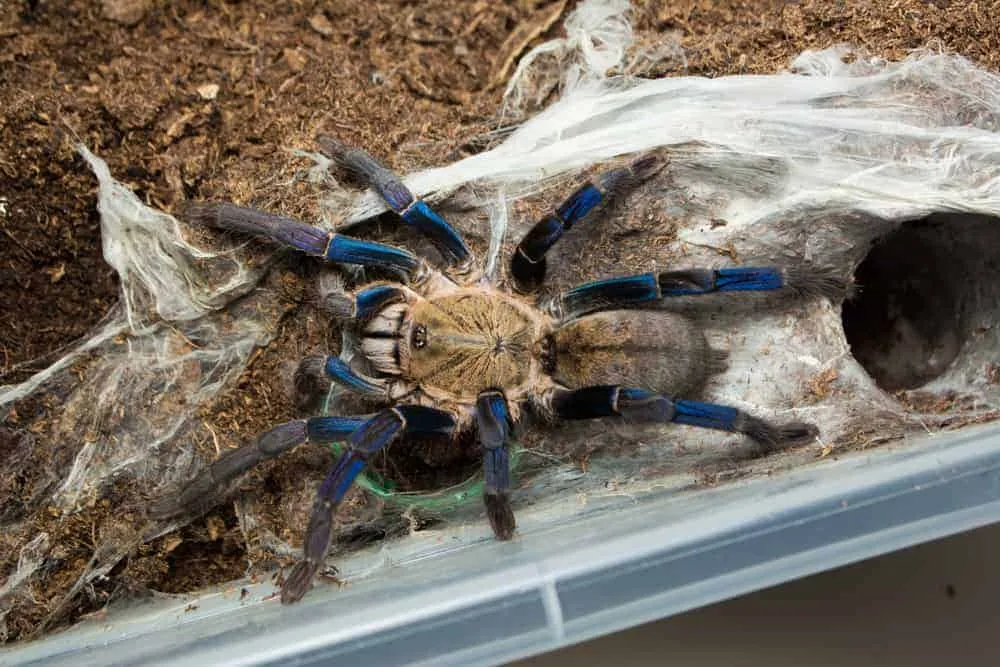What is a Cobalt Blue Tarantula Bite
A cobalt blue tarantula bite is a rare but potentially concerning event. Understanding what happens when a cobalt blue tarantula bites is crucial for anyone who owns one or encounters them in the wild. These spiders, known for their striking blue coloration, possess venom that can cause various reactions in humans. This article delves into the specifics of a cobalt blue tarantula bite, providing essential information on the spider itself, the nature of its venom, the top 5 facts about bites, what to do if bitten, and long-term effects. The information provided aims to equip you with the knowledge necessary to handle such situations safely and effectively. It is important to remember that while most tarantula bites are not life-threatening, they can be quite unpleasant and require immediate attention and proper care.
The Cobalt Blue Tarantula
The cobalt blue tarantula (Cyriopagopus lividus) is a species of tarantula native to Myanmar and Thailand. They are popular in the pet trade due to their vibrant blue legs and carapace, contrasting with their gray or black bodies. However, their beauty belies a defensive nature and a venomous bite. They are burrowing spiders, spending most of their time underground in their natural habitat. When threatened, they can be quite aggressive, and a bite is a definite possibility. This tarantula is known for its speed and striking ability, which means an encounter can happen quickly. Proper handling and awareness of their behavior are essential for anyone who interacts with them, whether as a pet owner or a researcher.
Appearance and Habitat
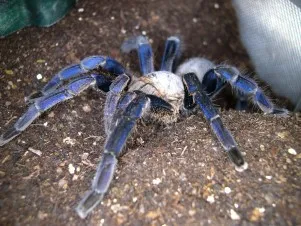
The cobalt blue tarantula is easily recognizable due to its vivid blue coloration, especially prominent on its legs. The carapace can range from a metallic blue to a gray-blue. In the wild, they are typically found in burrows in humid environments like the rainforests of Myanmar and Thailand. As a burrowing species, they construct tunnels underground where they spend the majority of their time, emerging primarily to hunt or mate. Captive environments should replicate their natural habitat, including appropriate substrate and humidity levels, to ensure their well-being and reduce stress, which can make them more prone to bite.
Cobalt Blue Tarantula Venom
Cobalt blue tarantula venom is a complex mixture of proteins and other compounds. Its primary purpose is to subdue prey, such as insects and small invertebrates. The venom affects the nervous system, causing paralysis and, ultimately, death in the prey. Although the venom is designed for insects, it can also affect humans, leading to various symptoms. The composition of the venom varies depending on factors such as the spider’s age, health, and diet. Understanding the basic components of the venom is vital for understanding the effects of a bite and developing appropriate treatment protocols. While not lethal to humans, the venom is potent enough to cause significant discomfort and medical attention.
Toxicity of Cobalt Blue Tarantula Venom
The toxicity of cobalt blue tarantula venom is relatively low compared to other venomous creatures. Bites are rarely life-threatening, but they can still be painful and cause various symptoms. The venom primarily affects the local area around the bite site. The effects on humans are not well studied and varies from individual to individual. Factors like sensitivity, and the amount of venom injected can affect the severity of the symptoms. While severe reactions are uncommon, it’s essential to treat any bite with respect and seek medical advice if symptoms worsen or if there is any concern.
Top 5 Facts About Cobalt Blue Tarantula Bites
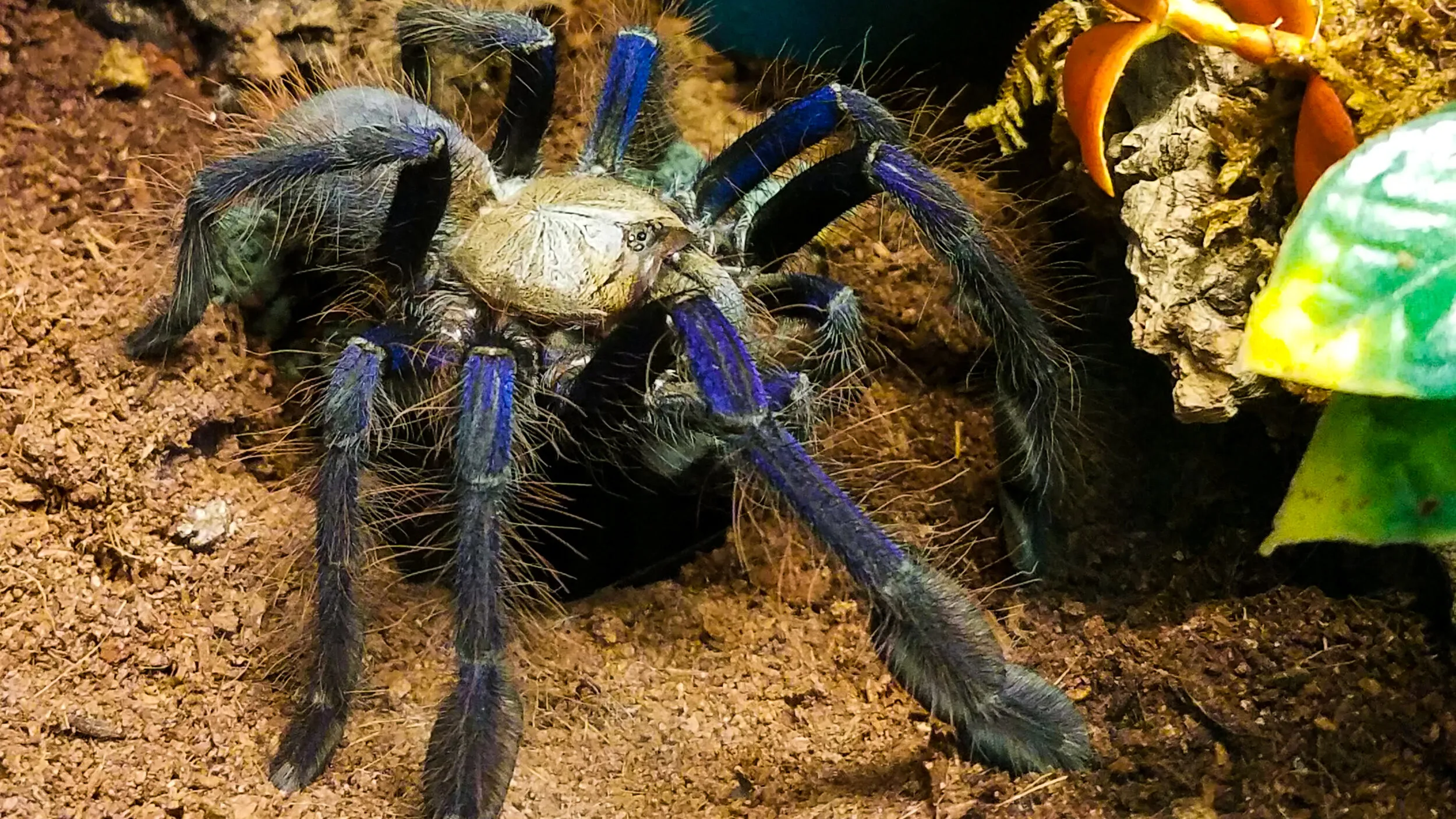
Fact 1 Signs and Symptoms
The symptoms of a cobalt blue tarantula bite can vary from person to person, but some common signs include immediate pain at the bite site, similar to a bee sting. Other symptoms may include redness, swelling, and itching around the bite. Some people might experience muscle cramps, particularly in the affected limb. In more severe cases, nausea, vomiting, and dizziness can occur. It’s important to observe the bite area and monitor for any systemic symptoms. Recognizing these signs quickly is the first step in seeking prompt medical attention, which can help to alleviate the symptoms and reduce the risk of complications. Immediate reporting will increase successful recovery.
Fact 2 First Aid Procedures
If bitten by a cobalt blue tarantula, several first aid measures should be taken immediately. First, stay calm and move away from the spider to a safe location. Clean the bite area with mild soap and water to prevent infection. Apply a cold compress or ice pack to the bite site to reduce swelling and pain. Elevate the affected limb to minimize swelling. It is vital to seek medical attention, but these initial steps can provide relief and prevent the worsening of symptoms. Do not attempt to suck out the venom, as this is ineffective and may cause further harm. Keep the bite area clean and dry, and avoid scratching it to prevent secondary infections.
Fact 3 Medical Treatment
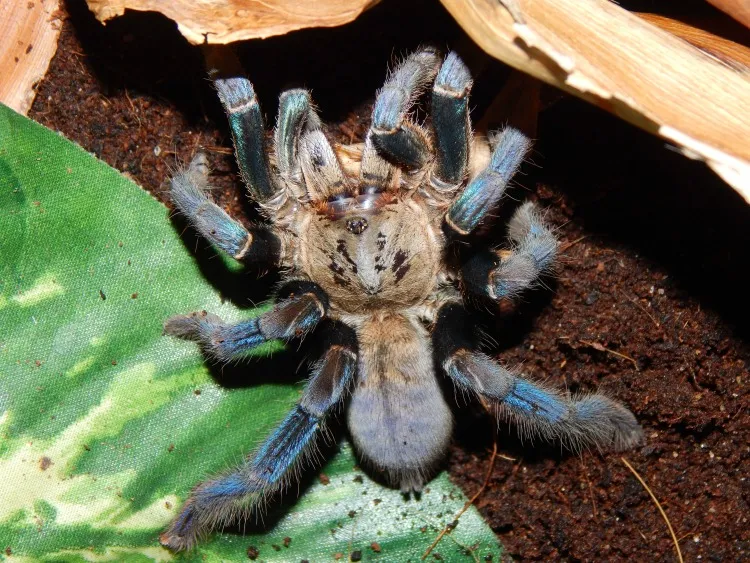
Medical treatment for a cobalt blue tarantula bite typically focuses on symptom management. The doctor will likely assess the bite and may recommend pain relievers, antihistamines, or anti-inflammatory drugs to reduce pain, swelling, and itching. In some cases, especially if there is a secondary infection, antibiotics might be necessary. Tetanus shots may also be recommended to prevent infection. The healthcare provider will monitor the patient’s vital signs and observe for any systemic reactions. It’s essential to follow the medical advice and complete any prescribed medications. The recovery period will depend on the severity of the bite and the individual’s response to treatment. Close monitoring of symptoms is required.
Fact 4 Potential Complications
While most cobalt blue tarantula bites do not lead to serious complications, there are some potential risks. One common complication is secondary infection at the bite site, which can occur if the wound is not properly cleaned or if the person scratches the area. Allergic reactions, although rare, can cause more severe symptoms, such as difficulty breathing or swelling of the throat. Some people may experience muscle spasms, which can be very painful. In rare cases, prolonged pain or nerve damage might occur. The seriousness of these complications underlines the importance of seeking prompt medical attention and following medical instructions.
Fact 5 Prevention
Preventing cobalt blue tarantula bites is the best course of action, particularly for pet owners and those working with tarantulas. Always handle tarantulas with care and use appropriate tools like long tongs or brushes when necessary. Avoid direct handling unless absolutely necessary. Make sure to keep the spider’s enclosure secure and well-maintained to prevent escape. Educate yourself about the spider’s behavior and signs of stress or aggression. Supervise children around tarantulas, and teach them the importance of not touching the spiders. Regular inspection of the enclosure and proper cleaning can help prevent bites. Additionally, always wash hands after handling the enclosure or any items that have been in contact with the tarantula.
What to Do If You’re Bitten

Immediate Actions
If you are bitten by a cobalt blue tarantula, the first steps are critical. Remove yourself from the immediate area to ensure safety. Wash the bite area gently with soap and water. Apply a cold compress to the bite to help reduce pain and swelling. Stay calm and try to identify the spider, as this information can be helpful for medical professionals. Take notes on when the bite occurred and any initial symptoms experienced. If you have been bitten, contact a healthcare provider immediately and describe the situation. Be prepared to provide details about the spider’s appearance, if possible, to aid in the assessment and treatment.
When to Seek Medical Attention
It’s important to seek medical attention after a cobalt blue tarantula bite. Contact emergency services if you experience severe symptoms such as difficulty breathing, chest pain, or severe allergic reactions. Visit an urgent care clinic or your doctor if you experience any of the symptoms mentioned earlier, such as persistent pain, swelling, or signs of infection. Do not hesitate to get medical help. Prompt medical care helps manage symptoms and prevent possible complications. Following medical guidance is essential for recovery, and seeking immediate attention can help you avoid potential complications and ensure an effective, timely recovery.
Long-Term Effects and Recovery
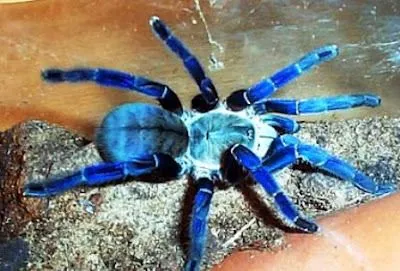
The long-term effects of a cobalt blue tarantula bite are generally minimal. Most people recover fully within a few days to a week, depending on the severity of the bite and their health condition. Some might experience lingering pain, sensitivity, or minor skin irritation. In rare cases, some people may experience a mild form of post-traumatic stress disorder (PTSD) associated with the bite. Following medical advice, taking care of the bite area, and monitoring for any unusual symptoms will help ensure full recovery. Regular follow-up appointments may be necessary. Most people find that the bite has no lasting impact on their health. Always be aware of your surroundings and the potential risks associated with venomous creatures.
